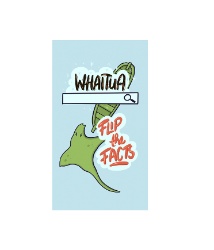The Government is proposing to open up some of Aotearoa’s most highly productive agricultural land to make it available for housing development.
Sweeping proposals to change the RMA national direction include the country’s most productive agricultural areas, which are classed according to how versatile they are for primary production. According to the proposal, Land Use Capacity 3 land would no longer be protected in the National Policy Statement for Highly Productive Land (NPS-HPL), which restricts the rezoning, subdivision, and use of Highly Productive Land.
Consultation on the proposed changes to the NPS-HPL runs until this Sunday, 27 July 2025.
The SMC asked experts to comment. The SMC has also gathered expert reactions on proposed RMA changes to housing and slash management.
Emeritus Professor David J. Lowe, University of Waikato, comments:
“It is proposed that the National Policy Statement for Highly Productive Land is emended to remove land use capability (LUC) class 3 soils from their current protection ‘from inappropriate land use and development’. The proposal is poorly considered and, if it goes through, would be an irreversible blunder of intergenerational scale for multiple reasons.
“Future generations of New Zealanders are being robbed of the potential productivity of versatile soils by people with a vested interest. The Luxon-led coalition government has an ethical, moral, and legal obligation to provide for future as well as current generations.
- “Contrary to popular myth, New Zealand does not have large areas of highly productive soils. Rather, such soils, encompassing LUC classes 1 and 2 along with most class 3 soils, make up only 14% of New Zealand’s soils. Class 1 (0.7%) and 2 (4.5%), the most versatile soils, amount to a mere 5.2%, with class 3 soils another 9.2 %. Removing class 3 soils from protection would leave just 5% of New Zealand’s soils to sustain the entire nation in perpetuity.
- “Many of the highly-productive (versatile) soils typically have taken around 10,000 to 20,000 years, some 50,000 years and even longer (several hundred thousand years in Pukekohe area), to develop and hence are irreplaceable.
- “The versatile soils confer the key capability to produce a wide range of crops yet over 10% have already been lost to lifestyle blocks and housing, with around 33% of the best land (highly versatile soils) in Auckland and Waikato lost for good to urban expansion under an accelerating process.
- “The high-value soils of the Pukekohe-Bombay area have been facing “death by a thousand cuts” over the past few decades under housing pressure yet it is seldom appreciated that these soils, only ~4,400 ha in extent (~3.8% of New Zealand’s horticultural land) produce ~26% by value of New Zealand’s vegetable production adjacent to the country’s largest market and under a horticulturally favourable climate.
- “The versatile
soils, including many LUC 3 soils, must be preserved:
– to support a wide variety of viable land use options, including cropping, to meet the foreseeable needs of future generations
– to facilitate the sustainable production of food and fibre and other services and to help maintain food sovereignty (the ability to maintain authority over New Zealand’s food supply)
– to preserve soil ecosystems that provide environmental services and confer the greatest natural protection to the environment
– to maintain natural capital and soil diversity - “The versatile
soils have
– high energy-use efficiency and yields for various crops
– high pollution absorption capacity
– moderate or better soil resilience - “There are plenty of less-versatile soils available for housing.
“In conclusion, preservation of nationally scarce highly-productive land including LUC class 3 soils for growing crops is of paramount importance because further loss needlessly and irreversibly limits this option for current and future generations. Hence the proposed amendment should be abandoned.
“Further, rather than maintaining its disparaging attitude to science, and geoscience in particular, and its reprehensible ridiculing of expert opinion, the current coalition government should engage meaningfully and respectfully with soil scientists and horticulturalists to resolve the conflicts and self-interest of vested parties with respect to land use in New Zealand.”
Conflict of interest statement: Lowe is a former professor in Earth Sciences, School of Science, University of Waikato, Hamilton. He is not commenting on behalf of the institution.
Dr Pierre Roudier, President, New Zealand Society of Soil Science, comments:
“Land classified as Land Use Capability class 3 (LUC3) represents the backbone of New Zealand’s food and fibre production and high-value exports. It makes up two-thirds of the land currently protected under the National Policy Statement for Highly Productive Land (NPS-HPL) and supports a wide range of primary production, ranging from dairy and arable farming to viticulture and horticulture. In Taranaki, 80% of LUC3 land is used for high-value dairy exports, while in Marlborough and Tasman, around 30% supports intensive horticulture, including vineyards. LUC3 land is characteristically extensive and highly productive, supporting large-scale farming and a wide range of crops across New Zealand’s varied climates. If the protection of LUC3 land were removed entirely, New Zealand would risk losing large, connected and versatile areas of land that are essential for both domestic food supply and high-value export industries. Once this land is built on, it’s lost from food production forever.
“Blanket removal of protections of LUC3 land from the NPS-HPL is not required to achieve the housing goals the Government has set. Exceptions to the current NPS-HPL already exist that allow councils to approve urban development on LUC 1-3 land when justified. Meanwhile, blanket removal of LUC3 protections risks large-scale rural residential subdivision, which is an inefficient use of our best land. Research shows that the most pressing issue on HPL is residential lifestyle development, significantly more so than edge-of-city expansion. This type of development breaks up productive farmland into smaller, disconnected parcels, which not only makes the land harder to farm efficiently but also introduces new pressures because of ‘reverse sensitivity’ (when new residents in rural areas object to normal farming activities, leading to restrictions on farms). These impacts reduce the overall productivity and versatility of the land. Rural residential blocks on LUC class 3 land now take up an area equivalent to nearly 60% of all the land in New Zealand used to grow vegetables – highlighting the scale of land lost to low-density residential development.
“The Regulatory Impact Statement outlines 4 different policy options, ranging from a status quo to a complete removal of LUC3 protections. One of the more balanced options would allow councils to enable urban growth on LUC3 land through local planning processes, while still protecting that land from residential lifestyle subdivision. This targeted approach would support housing goals near urban areas without opening the door to uncontrolled sprawl across the wider countryside.
“The proposed Special Agricultural Areas (SAAs) are poorly defined and currently limited to just two regions (Pukekohe and Horowhenua), raising concerns about transparency, national consistency, and scientific rigour. Their effectiveness depends on being grounded in biophysical land qualities, not just current land use. This narrow focus risks excluding other significant food-producing areas and ignores future shifts due to climate or market changes. SAAs could also be less efficient than refining the existing LUC system, which already covers the whole country and is based on scientific land assessment. Without clear criteria and wide consultation, SAAs may create confusion and leave large areas of valuable land unprotected – especially if protections on LUC3 land are lifted before the SAA framework is finalised.”
Conflict of interest statement: “Pierre Roudier is employed full-time by the Bioeconomy Science Institute as a Senior Scientist. He is also the current President of the NZ Society of Soil Science (NZSSS), and his commentary is provided from his perspective as President of the NZSSS.”




 Stats NZ: Total Greenhouse Gas Emissions Rise 0.9 Percent In The March 2025 Quarter
Stats NZ: Total Greenhouse Gas Emissions Rise 0.9 Percent In The March 2025 Quarter Commerce Commission: ComCom Finds No Evidence Of Cartel Behaviour In Banks’ Involvement In Net-Zero Banking Alliance
Commerce Commission: ComCom Finds No Evidence Of Cartel Behaviour In Banks’ Involvement In Net-Zero Banking Alliance Hāpai te Hauora: Pātea - A World-First Māori Gambling Harm Digital Platform Launches Across Aotearoa
Hāpai te Hauora: Pātea - A World-First Māori Gambling Harm Digital Platform Launches Across Aotearoa Āti Awa Toa Hauora Iwi Māori Partnership Board: New Whaitua Mapping Tool And Monitoring Our Oranga Framework Places Health Information In Whānau Hands
Āti Awa Toa Hauora Iwi Māori Partnership Board: New Whaitua Mapping Tool And Monitoring Our Oranga Framework Places Health Information In Whānau Hands Hugh Grant: How You Know You Need To Get Your Business's Plumbing Checked
Hugh Grant: How You Know You Need To Get Your Business's Plumbing Checked Bill Bennett: Download Weekly—Winter, game updates see UFB traffic surge
Bill Bennett: Download Weekly—Winter, game updates see UFB traffic surge


